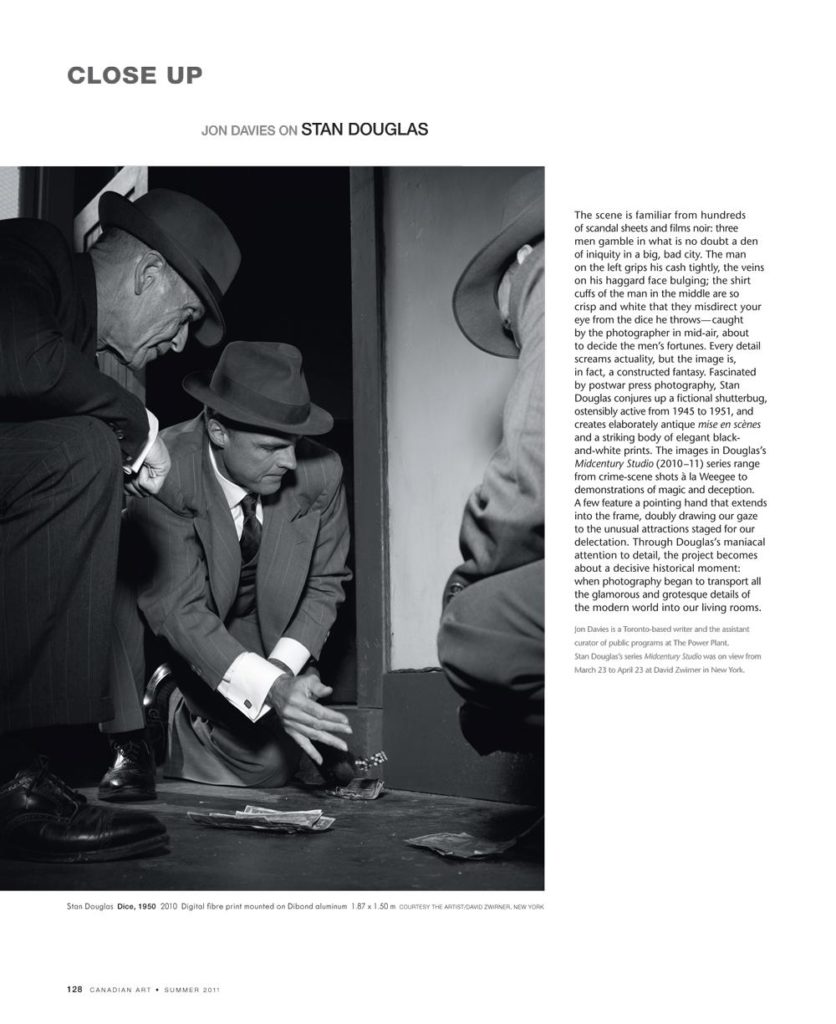The scene is familiar from hundreds of scandal sheets and films noir: three men gamble in what is no doubt a den of iniquity in a big, bad city. The man on the left grips his cash tightly, the veins on his haggard face bulging; the shirt cuffs of the man in the middle are so crisp and white that they misdirect your eye from the dice he throws—caught by the photographer in mid-air, about to decide the men’s fortunes. Every detail screams actuality, but the image is, in fact, a constructed fantasy. Fascinated by postwar press photography, Stan Douglas conjures up a fictional shutterbug, ostensibly active from 1945 to 1951, and creates elaborately antique mise en scènes and a striking body of elegant black-and-white prints. The images in Douglas’s Midcentury Studio (2010–11) series range from crime-scene shots à la Weegee to demonstrations of magic and deception. A few feature a pointing hand that extends into the frame, doubly drawing our gaze to the unusual attractions staged for our delectation. Through Douglas’s maniacal attention to detail, the project becomes about a decisive historical moment: when photography began to transport all the glamorous and grotesque details of the modern world into our living rooms.
Jon Davies is a Toronto-based writer and the assistant curator of public programs at the Power Plant. Stan Douglas’s series Midcentury Studio was on view from March 23 to April 23 at David Zwirner in New York.
This is an article from the Summer 2011 issue of Canadian Art. To read more from this issue, please visit its table of contents.

 Spread from the Summer 2011 issue of Canadian Art
Spread from the Summer 2011 issue of Canadian Art







